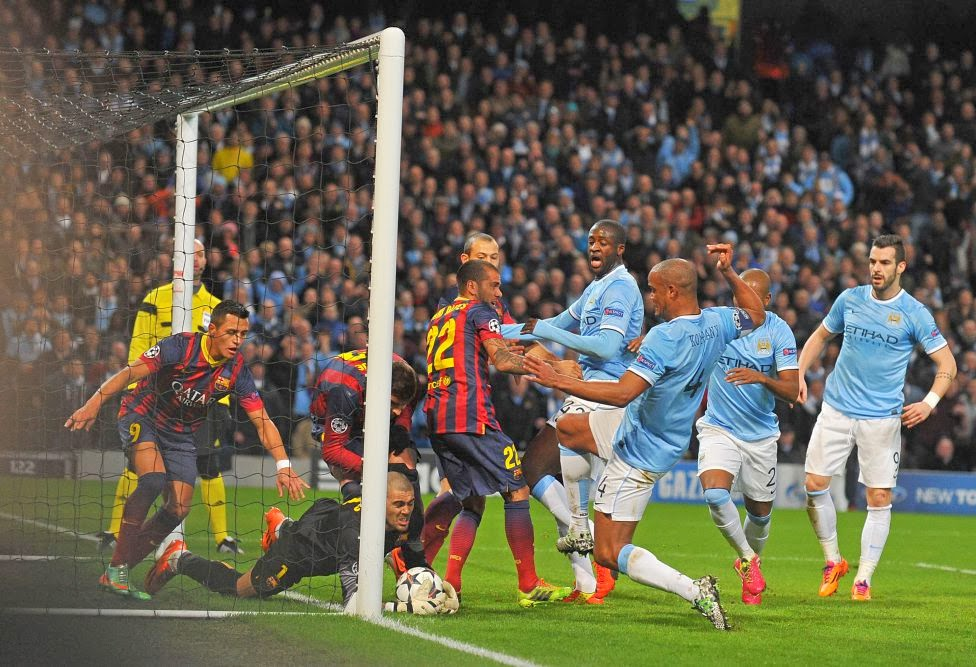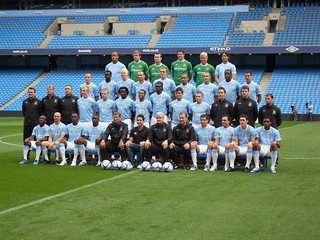Decoding Manchester City’s Lineup: Tactical Dominance

Pep Guardiola’s Manchester City isn’t just a team; it’s a meticulously crafted system, a symphony of movement, precision, and tactical flexibility. The starting XI isn’t merely a collection of individuals; it’s a carefully assembled puzzle where each piece plays a vital role in the overall masterpiece. Analyzing the City lineup requires more than just naming the players; it demands understanding the roles, the relationships, and the philosophy that underpin Guardiola’s tactical blueprint.
This article delves deep into the intricacies of the Manchester City lineup, exploring its evolution, key players, tactical formations, and the underlying principles that drive its consistent success.
The Fluid Foundation: Beyond a Fixed Formation
While the 4-3-3 has become synonymous with Guardiola’s City, the reality is far more nuanced. The team’s tactical shape is less a rigid structure and more a fluid framework, shifting and morphing throughout the match.
They might begin in a 4-3-3, but seamlessly transition into a 3-4-3, a 4-2-3-1, or even a 5-2-3, depending on the opponent, the game state, and Guardiola’s tactical vision. This dynamic approach makes it incredibly difficult for opponents to prepare, as they must contend with multiple variations within a single game.
This tactical flexibility stems from several factors:
Player Versatility: City’s squad is packed with players capable of performing multiple roles. João Cancelo’s ability to seamlessly switch between full-back and midfield, Bernardo Silva’s adaptability across midfield and attack, and Phil Foden’s comfort on the wing and in central positions are prime examples. This versatility allows Guardiola to make tactical adjustments without sacrificing personnel.
In-Game Adjustments: Guardiola is a master tactician, constantly analyzing the game and making tweaks to his team’s formation and approach. He’s not afraid to change things at halftime or even during the flow of play, shifting players around and altering the team’s shape to exploit weaknesses or gain an advantage.
Opponent-Specific Strategies: City’s tactical approach is often tailored to the specific opponent. Against a deep-lying defense, they might adopt a 3-4-3 to create overloads in wide areas. Against a team with a strong counter-attack, they might opt for a 4-2-3-1 to provide more midfield stability.
The Pillars of the System: Key Players and Their Roles
While the formation is fluid, certain players and their roles remain crucial to City’s success. These are the pillars upon which Guardiola’s system is built:
Ederson: The Modern Goalkeeper: Ederson is more than just a shot-stopper; he’s a vital part of City’s build-up play. His exceptional passing range and composure on the ball allow him to function almost as a deep-lying playmaker, initiating attacks from the back and breaking the first line of the opponent’s press.
The Full-Backs: Creators and Defenders: City’s full-backs, traditionally Kyle Walker and João Cancelo (or variations thereof), are not just defenders; they’re attacking weapons. They provide width, overlap the wingers, and contribute significantly to the team’s creative output. Their ability to tuck inside and form a midfield three in certain formations adds another layer of tactical complexity.

The Center-Backs: Composed and Commanding: Rúben Dias and Aymeric Laporte (or their respective partners) provide the defensive foundation. Dias’ leadership, aerial prowess, and organizational skills are crucial, while Laporte’s left-footedness and passing ability offer balance and contribute to the team’s build-up. Their ability to play out from the back with composure is essential to Guardiola’s philosophy.
Rodri: The Metronome: Rodri is the anchor of City’s midfield. He provides defensive solidity, wins back possession, and dictates the tempo of the game. His positional awareness and ability to read the game make him a crucial cog in City’s system, allowing the more creative players to flourish.
The Midfield Maestros: De Bruyne and Silva (and others): Kevin De Bruyne and Bernardo Silva (along with players like İlkay Gündoğan or Phil Foden) are the creative engines of the team. De Bruyne’s vision, passing range, and ability to score goals make him one of the most dangerous players in the world. Silva’s close control, intricate dribbling, and tireless work rate make him an invaluable asset. Their ability to find space, link up play, and create scoring opportunities is essential to City’s attacking prowess.
The Forwards: Haaland and his supporting cast: Erling Haaland’s arrival has transformed City’s attack. His clinical finishing, physicality, and movement make him a constant threat. He’s supported by a dynamic cast of wingers and attacking midfielders, including Jack Grealish, Phil Foden, and others, who provide creativity, width, and goals. Their ability to interchange positions, create chances, and contribute defensively makes them a crucial part of City’s attacking machine.
The Guardiola DNA: Positional Play and Collective Effort
Underpinning City’s tactical brilliance is Guardiola’s philosophy of positional play. This involves players occupying specific zones on the pitch, both with and without the ball, to create passing lanes, maintain a compact shape, and control possession. It’s not just about individual brilliance; it’s about a collective understanding of the game and a willingness to work for the team.
Key aspects of Guardiola’s philosophy include:
Maintaining Width and Depth: Players are positioned to stretch the opponent’s defense, creating space in central areas.
Creating Passing Lanes: Players move and rotate to open up passing lanes, allowing the team to progress the ball effectively.
Controlling Possession: City prioritize keeping the ball, believing that it’s the best way to prevent the opponent from scoring.
Pressing High: City aggressively press the opponent in their own half, aiming to win back possession quickly and create scoring opportunities.
Collective Responsibility: Every player is expected to contribute both in attack and defense, tracking back, making selfless runs, and working hard for the team.
The Evolving Masterpiece: Constant Refinement
The Manchester City lineup is not static; it’s a constantly evolving masterpiece. Guardiola is always tinkering with his tactics, refining his system, and adapting to new challenges. He’s a master of innovation, constantly seeking ways to improve his team and stay one step ahead of the competition.
This constant evolution is what makes Manchester City such a formidable force, a team that’s always learning, growing, and striving for perfection. Analyzing the City lineup is not just about understanding the present; it’s about anticipating the future, the next tactical innovation, the next evolution in Guardiola’s ever-changing masterpiece.
FAQs
Who is Manchester City’s current manager?
Pep Guardiola, who has been in charge since 2016, is the current manager. His influence has been pivotal in transforming Manchester City into a dominant force in European and English football. Guardiola is renowned for his tactical innovation, possession-based style, and a focus on developing players.
What formation does Manchester City typically use?
Manchester City under Guardiola often employs a 4-3-3 formation, although they are flexible, shifting to a 4-2-3-1 or 3-2-4-1 depending on the match and opponent. The 4-3-3 allows City to control possession, with a solid midfield three and wide attacking players who can create chances from the wings.
Who are the key players in Manchester City’s current lineup?
As of the 2024-2025 season, key players in Manchester City’s lineup include:
Erling Haaland: The Norwegian striker is a goal-scoring machine and a constant threat up front.
Kevin De Bruyne: City’s playmaker, known for his vision, passing range, and creativity.
Rodri: A key defensive midfielder who controls the tempo of the game.
Ruben Dias: The central defender, a rock at the back who is crucial in both defending and building play from the rear.
Jack Grealish: A versatile winger who adds flair and creativity to the attack.
These players, along with others like Bernardo Silva, John Stones, and Phil Foden, make City a well-rounded team.
What positions are the strongest in Manchester City’s lineup?
Manchester City’s strength lies in their midfield and attack. Players like Kevin De Bruyne, Rodri, and Bernardo Silva give the team technical mastery and control in the middle of the park. In attack, Haaland’s ability to score consistently makes City a dangerous side in front of goal. The defense, led by Ruben Dias, is also solid, although occasionally vulnerable to counter-attacks.
Who are the backup players in the current squad?
Manchester City has a deep squad, which means there are several high-quality backup players. Some of the notable ones include:
Julian Álvarez: A versatile forward who can play as a second striker or winger.
Manuel Akanji: A central defender who has impressed when called upon.
Cole Palmer: A young winger who is highly regarded for his potential.
Sergio Gómez: A full-back who provides depth in defense.
These backups ensure that the team can continue performing well even with injuries or suspensions.
In Summary
Manchester City’s lineup is a reflection of Pep Guardiola’s tactical genius and the club’s commitment to excellence. The team’s ability to adapt to different formations, the individual brilliance of the players, and the collective effort on the pitch make them a joy to watch.
However, Guardiola is not one to rest on his laurels. He is constantly tinkering with his tactics, looking for ways to improve his team and stay ahead of the competition. As such, the Manchester City lineup is a constantly evolving masterpiece, a testament to the ever-changing nature of modern football.
To read more, Click here



Leave a Comment